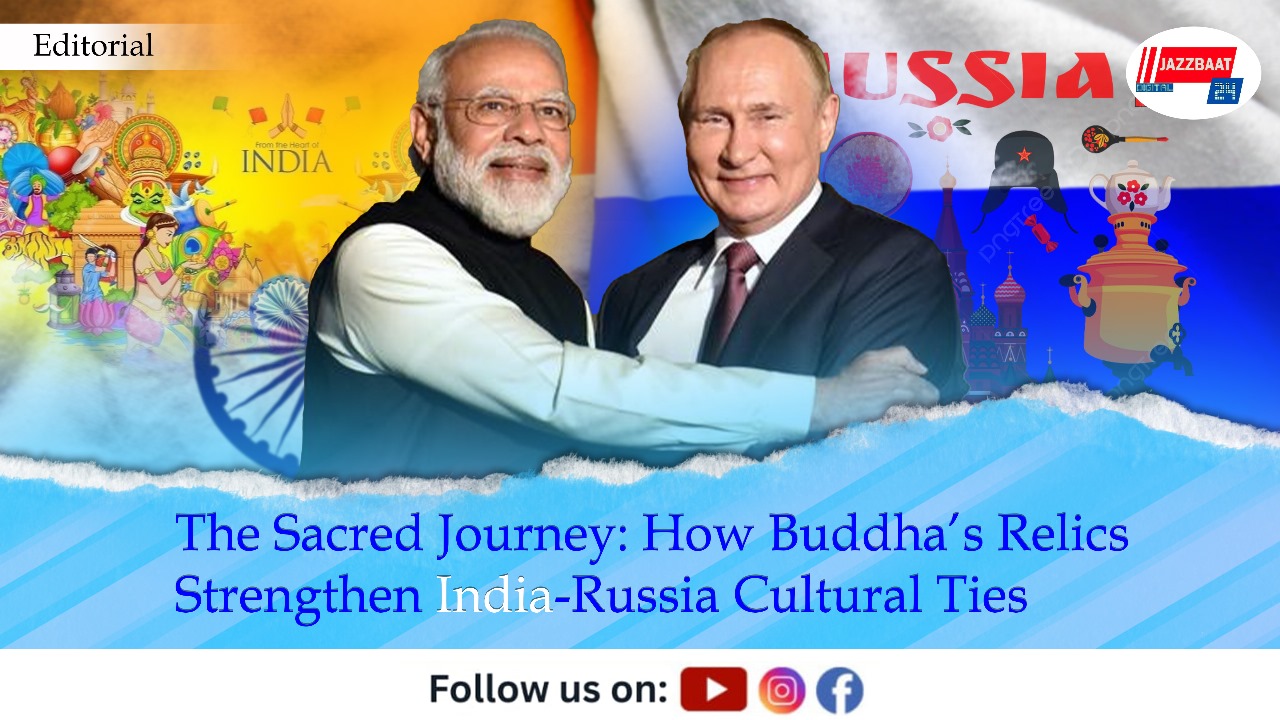
When the Holy Relics of Lord Buddha arrived in Elista, the capital of Russia’s Kalmykia Republic, on 11 October, it was far more than a ceremonial exchange of artefacts. It symbolised a deeper, living connection, one that transcends geography and politics to celebrate shared values of peace, compassion, and enlightenment. The eight-day exposition of the relics at the Geden Sheddup Choikorling Monastery, also known as the “Golden Abode of Shakyamuni Buddha,” marks a defining moment in the cultural diplomacy of modern India.
Accompanied by Uttar Pradesh Deputy Chief Minister Shri Keshav Prasad Maurya, monks, and officials, the relics were flown aboard a special Indian Air Force aircraft, signifying the significance the Government of India places on cultural and spiritual outreach. The exposition, organised by the Ministry of Culture in collaboration with the International Buddhist Confederation (IBC), the National Museum, and the Indira Gandhi National Centre for the Arts (IGNCA), underscores how India’s soft power continues to draw upon its civilisational depth.
For Russia’s Kalmykia Republic, the arrival of the relics holds immense religious and emotional resonance. The Kalmyks, descendants of Oirat Mongols who migrated from Western Mongolia in the 17th century, are Europe’s only ethnic group practising Mahayana Buddhism. Their faith and traditions, shaped by centuries of nomadic history, find new affirmation through this exchange. It is a reminder of the 19th Kushok Bakula Rinpoche’s pioneering role in reviving Buddhism across Russia’s Buddhist regions, Kalmykia, Buryatia, and Tuva and Mongolia.
The enshrinement of the relics at the Golden Abode, one of Europe’s largest Buddhist monasteries, is accompanied by an elaborate programme of teachings, exhibitions, and religious ceremonies. His Holiness the 43rd Sakya Trizin Rinpoche will lead discourses, while the Holy ‘Kanjur’, a revered collection of 108 Mongolian religious texts translated from Tibetan - will be presented to Buddhist institutes and universities. A Memorandum of Understanding between the Central Spiritual Administration of Buddhists in Kalmykia and the IBC is also expected, laying the foundation for continued collaboration in preserving and promoting Buddhist heritage.
Cultural exhibitions, including “Sacred Legacy of the Shakyas: Excavation and Exposition of Buddha’s Relics,” and “Bodhicitta: Treasures of Buddhist Art,” enrich the event by tracing the journey of the relics from ancient India to their rediscovery. A unique philatelic exhibition curated by Vinod Kumar of Dharwad, Karnataka, displaying Buddhist-themed stamps from 90 countries, adds yet another layer of intercultural dialogue.
What makes this exposition remarkable is not merely its grandeur, but its symbolism. It demonstrates how cultural heritage can serve as a bridge of diplomacy in a world increasingly divided by political interests. Through Buddhism, India and Russia reaffirm a partnership grounded in mutual respect, spirituality, and shared history. Such cultural diplomacy, unlike transactional alliances, nurtures long-term understanding and goodwill between peoples.
India’s commitment to global Buddhist engagement has gained renewed vigour in recent years. The government’s initiatives, from the international celebration of Buddha Purnima to exhibitions of relics abroad, reflect a strategic yet deeply humanistic vision, one that positions India not just as the birthplace of Buddhism but as its enduring custodian. The relics, representing the spiritual essence of the Buddha’s teachings, become ambassadors of peace in a troubled world.
At a time when global conflicts and divisions dominate headlines, the exposition in Kalmykia offers an alternative narrative, one of unity through shared spiritual heritage. It highlights the power of cultural diplomacy to heal, inspire, and connect nations through timeless values rather than temporal gains.
As the relics rest in the serene halls of the Golden Abode until 18 October, they remind both India and Russia that the most enduring ties are not forged in treaties or trade, but in shared reverence for humanity’s spiritual quest. The exposition is not only a tribute to Lord Buddha but also to the timeless idea that compassion and understanding can still guide the world toward peace.